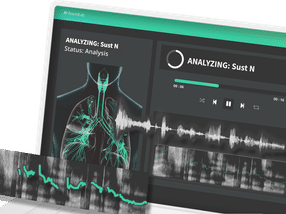National Physical Laboratory to Evaluate NanoSight
The UK’s national metrology institute, the National Physical Laboratory (NPL), is commencing a one-year evaluation program of NanoSight’s nanoparticle characterization technology, Nanoparticle Tracking Analysis (NTA).
The program takes the form of a Joint Industry Project, funded in part by government. The initial objective is a validation of NTA and comparison with existing nanoparticle sizing techniques and standards.
Dr Alex Cuenat, NPL’s Nanomaterials Group Leader, reports: “What differentiates NanoSight from existing light scattering techniques is that it provides a direct view of the sample under analysis and rapid quantitative estimation of the sample size, size distribution and concentration.
“No method is truly universal. Most ensemble measurements are made using dynamic light scattering (DLS) or photon correlation spectroscopy (PCS). These methods are very fast with thousands of particles analysed in a single second but they cannot accurately analyze multi-modal (more than one size) dispersions or follow changes during analysis.
“NanoSight’s Nanoparticle Tracking Analysis (NTA) differs in that it measures particle speed compared to DLS which is measuring intensity of light scattered. This unique real-time capability to follow the Brownian motion of individual nano-particles, leads to advantages over DLS. These include avoidance of a bias towards larger particles, which is driven by the latter’s dependence on scatter intensity; an estimate of concentration which NanoSight provides; and a unique image validating the results and providing additional insight.
“We first saw a NanoSight prototype in 2005 and recognised how, with development, the technique had potential to fill gaps in characterization methodologies of sub-micron dispersions. Since then, we have seen this technique develop well, so, although we do not know yet how this will result, we are enthusiastic about running an in-depth validation. This investigation will look at precision and accuracy and assess the validity of the algorithms used in NTA in some depth.”
See the theme worlds for related content
Topic World Spectroscopy
Investigation with spectroscopy gives us unique insights into the composition and structure of materials. From UV-Vis spectroscopy to infrared and Raman spectroscopy to fluorescence and atomic absorption spectroscopy, spectroscopy offers us a wide range of analytical techniques to precisely characterize substances. Immerse yourself in the fascinating world of spectroscopy!

Topic World Spectroscopy
Investigation with spectroscopy gives us unique insights into the composition and structure of materials. From UV-Vis spectroscopy to infrared and Raman spectroscopy to fluorescence and atomic absorption spectroscopy, spectroscopy offers us a wide range of analytical techniques to precisely characterize substances. Immerse yourself in the fascinating world of spectroscopy!































































